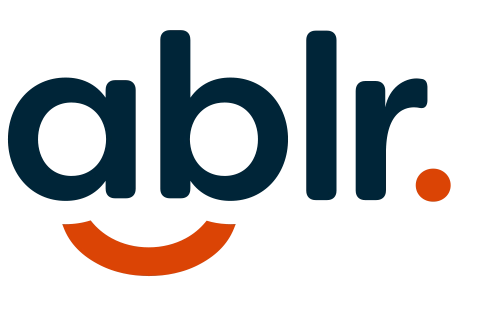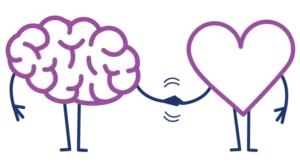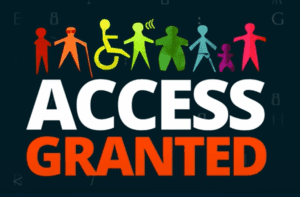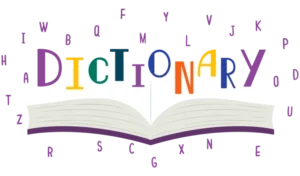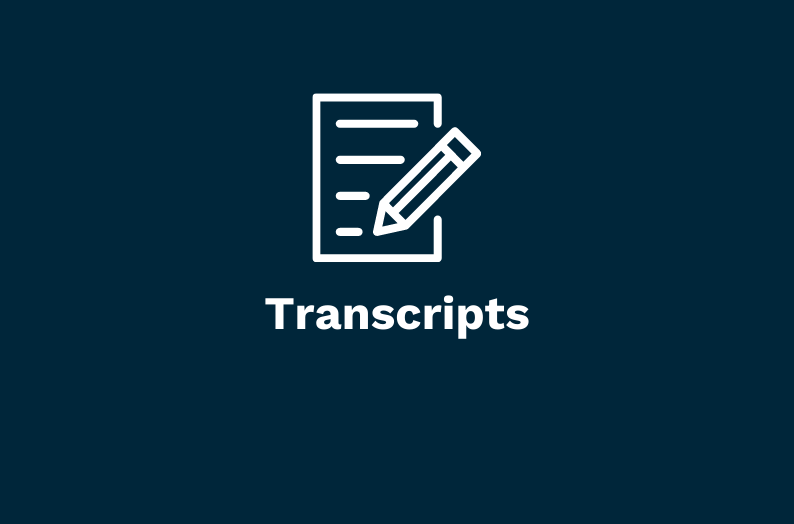John Samuel (00:09):
Hi, this is John Samuel, and this is all access with John Samuel. This is the show where we share the stories of leaders, entrepreneurs, and advocates, and sharing the stories of how they’re improving the lives of people, of all abilities. And today we have a very special guest. We have Liezel riddle, who is the associate Dean of the business school at George Washington university. She’s not only the associate Dean of the business school, but she’s also a dear friend of mine and a mentor. And somebody who’s been a huge inspiration in my life. And somebody who’s really led me down the road that I’ve gone. So we’re really thankful to have Liezel here today.
Liesl Riddle (00:48):
Well, thank you, John. It’s so nice to be here and you know, it goes both ways and you have inspired me and have had a huge impact on my life as well. So it’s a real honor to be here.
John Samuel (01:00):
Oh, that’s great. I’m braid now. I know it’s a really busy time right now, cause I know school just started just a few weeks ago, right?
Liesl Riddle (01:07):
It sure dad, it sure did John. And you know, we made a very fast pivot to all online. You know, we had spent the whole summer preparing our faculty and our classrooms and our technology for this magical thing called high flex learning. Right. And there’s all the big buzzword the summer. And that really was the idea that we were going to have students in the classroom socially distanced with all this technology where students could also live stream in if they needed to. So we work very, very hard on that. And then of course, we looked at the data university consulted with the, with the city and just decided, look, you know, we really need to, to go all online, that’s in the best interest of the students and the community.
John Samuel (01:51):
So going for faculty and for the students,
Liesl Riddle (01:55):
So is going actually pretty well given all the givens. You know, I think we have the advantage, I think at GW because we have in, in, in the school of business, we have an instructional design team. Um, that’s part and parcel of the school and our faculty are used to working with them. They had the team of folks at PhDs and instructional design and some multimedia folks, and they really work with our faculty, I think, to co craft these courses. Um, and I’m very proud that these courses are also a very big focus is making sure that these courses are also accessible. And I think that’s really important to having, you know, the instructional design team embedded right there, uh, with the faculty
John Samuel (02:38):
Things was that you really got into the online education. I remember because you were thinking about your own personal life in that decision as well, right?
Liesl Riddle (02:49):
Yeah, no, no, that’s right. I mean, GW school of business was already kind of a leader in online education. When I was asked to kind of put together the first sort of general online MBA program that would match the curriculum that we had on campus. And then some, um, I started doing all this research around, you know, what are some of the challenges on online learning? And I learned that, uh, one of the greatest challenges is, is hard to sustain attention over the same amount of time that you would be able to do so in an on-campus classroom. So I was kind of thinking about, well then how does that change? What we do when we’re online? And at the same time, as you know, one of my children, um, has ADHD and, um, and we had gotten a project to work on very first research project when he was in fourth grade to learn about JFK and his, uh, had to do a big research project on JFK’s life.
Liesl Riddle (03:46):
And he decided that his final output was going to be a puppet show about JFK’s life. And so, um, he needed a lot of help, uh, you know, helping him to figure out how to do that research, um, and then synthesizing all that information to then do this big creative project. So we went to the library, we got a whole bunch of books, you know, and I sat there with this big stack of books and I mean his attention, like a paragraph and fell on and, and started looking off into space. And I thought, how am I going to keep him engaged? So I went on the computer and I thought, okay, I’m going to look up, um, you know, things about JFK. And I came across a photo exhibition that had been designed for kids. And so he looked at the photos and read the captions.
Liesl Riddle (04:34):
And so that sustained his attention for a while. And then he was kind of like looking away now I start darting off as they do. So then they’re like, okay, well let’s find a speech of his. And so he’d watched his little video of his speech. And so at the end of the day, you know, it was exhausted. And I thought that he hadn’t really learned anything. And, and I was very worried about what the outcome was going to be. And at dinner, my husband asked her, what did you learn about JFK today? And he just strung together, all kinds of knowledge across different media that he had been exposed to that day in the most intricate story I had ever heard him telling his life. And that’s when the light bulb went off. And I thought, well, wait a minute. You know, if this child could sustain attention by moving, you know, sort of the learning stimulus around the brain in different ways in short bullets of knowledge, maybe that could then transfer to just any type of students, um, on, on, on technology and hence sort of the idea of how we deliver those, those courses were, were born and you and I have a lot of good conversations about that.
Liesl Riddle (05:43):
And you had some great ideas too.
John Samuel (05:45):
No, that’s awesome. You know, and, and because I know that the online education and that attention span, right, that just sitting in front of the computer screen, because before I using a screen meter that my eyes just things were just, it was just so difficult for me to, to just read content on the, on the, on the computer screen. But I used to find myself finding, you know, was it those little videos, me being able to, to consume content in different ways and I could see the benefit, different types of learners. Right. And so right now, you know, you’re not only the associate Dean, you’re also a mother, as you mentioned. And so now you have your, your, your two boys are in online education, right? Yes. So how’s that going? And how are you juggling being an associate Dean and having what 60 plus students plus having your own to home students at home? How’s that going and how are you doing that?
Liesl Riddle (06:41):
Well, hell it’s a lot of juggling. Um, it’s not always great on both sides of the ball, really, you know? Um, I, I feel like, you know, we’re still kind of new at it, but you do, you sort of end each day feeling like you’re almost not enough on, on, on either side. My youngest child has special needs and he’s a special learner in a lot of different ways. Um, he’s not literate. And, um, although it’s amazing what, he’s a pitch picture learner. So he memorizes, instead of being able to really read a word, he memorizes the way they look, um, and particularly cues in and memorizes context with a letter of a word and its position on the computer. So he does a lot of guessing, um, and then memorizes when it works. Right. Um, so he likes to, um, you know, take control of his learning.
Liesl Riddle (07:39):
He doesn’t like it when I help him either. Yeah. So, and some of that, I mean, most of that, almost everything about that is great, except for the fact that when he’s trying and doing all these experiments, when I’m not around then all sorts of technology doesn’t work and I don’t know what he’s doing to try to fix the problem and that’s true of any child. Um, but, uh, but I think that’s just one of the many things we all have kids that are trying to be independent with their technology. They want to be independent for their schoolwork. Um, but sometimes the technology eludes, not just the kids, but the parents too. Yeah,
John Samuel (08:18):
No, definitely. I mean, like, I’m really interested in, in, uh, how he’s adapting to this online education and having a teacher that’s, um, remote and how’s he dealing with that? And then how are you dealing with it kind of being a professional and also trying to kind of make sure that the technology is not calling and going down or anything else. So, um,
Liesl Riddle (08:42):
Well, like anything else, I think there’s sort of good and bad with this. I mean, I think for him, some of the benefits of online learning is that he also has significant social anxiety. Um, and so, you know, he has a lot of fear of new people, new situations, and too much sensory activity kind of shuts him down and raises anxiety. Yeah. So one of the things that’s interesting about online learning is that when he’s in a small group online or one-on-one online, it’s actually ideal because it takes away a lot of the stimuli that distracts him or him or intimidates him or overwhelmed him. Right. And really, truly focused. Now it takes them a while to warm up. But for example, you know, he had a, a summer school teacher this year that he had never met before. And I thought, Oh, this is not going to go well at all.
Liesl Riddle (09:39):
It’s online. He’s never met this person. And honestly it really didn’t take that long to establish that one-on-one rapport. However, you know, in the regular school year, he starts off the day embedded in the typical classroom and the online classrooms. So there’s around almost 30 kids in fifth grade, all online with one another. And there’s, it’s overwhelming for me to sit in it. Right. All the kids are talking at once. We had one kid the other day that put on a blue mask and devil mask and wouldn’t take it off. And the teacher’s teacher at fascinated and he wouldn’t take it off and she can’t take it off. And he just sort of sat there on camera, you know? And, um, and all the kids are asking, where do I do this? And where do I do that? You know, and he’s interested in it, but he’s mute or he’s just not going to give you anything. He’s just going to watch it. And, um, and he becomes more of an observer of his education rather than a participant. So I’m, I’m very grateful that they put him in a very small group. He’s just in a small group of three, on one for a good third to half of his day. And, uh, and that’s where you can tell the real exchange and the real learning, um, real learning happens
John Samuel (10:53):
As we kind of move forward. Do you think there’s going to be more of a hybrid type of learning? Do you think that may benefit him more? Do you think in a more traditional way yet when we don’t have to be online will be, uh, the right way to go.
Liesl Riddle (11:07):
I think that there will be more, um, for him in particular, he needs that to be embedded. All kids, I think, need to be embedded with one another. Right. And so I think even though it causes him anxiety to some degree, he’s fortunate in that it’s manageable anxiety, you know, he’s still functional. Um, he isn’t fully functional in a, in a, in a large social setting like that. Not all kids are. Um, but I think for him, that observation mode that he goes into is also a big learning mode. It just doesn’t look like that. The learning that we think about w where there’s call and response, he’s still learning a lot is an incredible observer. And then he imitates and so on. And that’s what he’s missing right now is that with these little video cameras and when you have a room of 30 and everybody’s like this thing, right.
Liesl Riddle (12:04):
He’s not able to see as much to mimic. Yeah. Um, and so I think he misses out a huge bit on that. So I w I think he always is going to need, um, and the other kids need to be embedded with him as well. Like they all have a lot to learn from one another. That being said, I do imagine that a lot more in his small group activity when he’s pulled out from class already, probably could, and probably should look more alike. Some of the things that he’s doing on, uh, on the computer now, he uses voice to text technology as you do, right? Yes. He’s, um, he’s doing a lot with that. Um, that’s, that’s very, very beneficial for him. And then the huge leap that he can make in, you know, creating sentences, doing that versus having to motor plan, the writing and the creation, um, has, has, has gone a big, a big way, but it’s still hard.
Liesl Riddle (13:08):
I mean, let, let’s just be honest. I mean, yeah. Um, you know, when you can’t read, knowing with all the different links that they send out and it’s in your email and it’s here and it’s there and you got to go look at Google classroom and you got to go to Blackboard, collaborate all these different places where he has to decode information. Um, it’s very, very difficult without assistance. And so that’s, you know, we even turned his schedule. So, you know, they sent out the schedule of what he’s supposed to do each period. So I turned it into a picture, you know, so I sat with him and we went through, okay, this is supposed to be math class. Let’s go to Google and look at all the images and come up with the word bath. What’s the image that says math to you, you know, and he would pick that. And so we made, he helped me kind of co craft his pictorial schedule, but he still can’t tell time yet. So we’re trying to work with a digital clock and, you know, look at the picture, look at the digital clock and coordinate that with the clock. Like that’s a lot to expect, um, from him. And so, so it’s, don’t be,
John Samuel (14:13):
You talked about the, um, the importance of being embedded with the other students, and this kind of goes back to how, you know, you and I really, I think, bonded in a different level. And that really was about how, um, when I was coming to the George Washington university and, uh, I was looking for a note card to see where I’m supposed to go sit and, and, uh, you know, you had no idea that I couldn’t see where I was supposed to go sit and, and you, you helped me, but you can empathize with, I was going through, can you really help me open up about my vision loss with my classmates so that I could really embed myself into the class and, you know, and for that, I can never thank you enough, you know, cause that really changed my life. It, it, it allowed me to be my authentic self. It allowed me to meet my wife, Nicole, and, uh, and confidence to where I am today. But, you know, I mean, I guess we’ve never talked about this, but have you, you know, have you dealt with other students in the grad school program with disabilities that you’ve had to, um, you know, coach mentor, or even just change the way that you taught your class to kind of, uh, accommodate,
Liesl Riddle (15:25):
You know? Yes. And I, and I think that it’s been, um, it’s been really, I think one of the most, uh, interesting and engaging things to do as an educator is to start to think about all these things that we sort of take for granted about what education should look like when you start to realize that that is designed for only a percentage of the population. And they’re all these other learners that learn in different ways. And if our true mission is education, then we shouldn’t be stuck on a model that doesn’t serve everyone. And so I really, I found it really enjoyable to sit down and try to think like we did with the online class example, like how do we need to change these things so that it is a more widely, um, understood experience. And I think that there’s been so many people that have tried who have disabilities or different abilities of different kinds that have tried to fit themselves into this box.
Liesl Riddle (16:25):
And they come out with a smaller amount of learning than they would have if we had just presented the material differently, um, or, or thought about it in a different way. And so, yeah, so some examples of that, you know, I think really have also have been around attention. There is a lot, I think on the, um, cognitive area that, um, that I think is not well understood about how those learners best learn and having children with, uh, or a child with, with, uh, ADHD. I can see what I suspect is that right? I’m not a doctor for doing that way, but I can see that type of behavior emanating itself in the classroom, you know, and letting those students, giving those students activities where it is acceptable for them to get up and move it, creating more, um, active breaks within my classroom instead of the traditional let’s sit here for an hour and a half, right.
Liesl Riddle (17:26):
And then let’s get up and take a break for all of 10 minutes, really thinking about getting people to get up and move their bodies as they’re learning, we all learn better. So I have started to break up my physical classrooms into 20 minute segments and I will. And as students, yeah, the students, the students all groan about it, but at the end, they all talk about later about how this has actually been really helpful for their learning. So I’ll say things like everybody form lines and lines means a big double line that runs in the front of the classroom. And then I will have them work with the partner in front of them. And I’ll ask the question, let’s say it’s about a cakes, you know, and you know, what’s the main challenge. What’s the central problem of the case. You have three minutes go and then you’re talking, you know, across in the line.
Liesl Riddle (18:14):
And then I have the people at the PIR, one of the people at the ends go to the other side and everybody moved down one. Now everybody’s got a new partner. Right. And then you talk about the next question. So we kind of do that and I’ve moved that activity around. So nobody knows when to expect it. Some days it’s at the beginning, it’s at the middle it’s at the end. You know, I will then think about ways as I’m structuring a class for, this is a point in time where we haven’t moved in a while. And so I’ll think about, let’s take a vote on something or let’s think of something that’s kind of a debate at this point in the conversation, or I’ll give an example where they have to choose, they have to agree or disagree. And then I’ll just say, if you agree, stand up.
Liesl Riddle (18:57):
And so there’s a, you know, a voting with your, you know, your body kind of thing. So I’m trying to move more of the kinetic activity into the classroom to just be another way to get that energy out, to focus the attention, which I think actually helps all learners, but particularly those that have some of those cognitive challenges. Um, you know, you were the one that really gave me the greatest insight onto the, you know, onto those that are, uh, visual impairments. And we learned a whole lot working with you as well, that I think is carried on for other students. So there’s all different kinds of abilities and challenges that we’ve had to attune learning to.
John Samuel (19:38):
If my experience could help another person down the line. And, and if other people who are blind can see that George Washington university is a great, you know, in an inclusive school, that’s, that’s even better. Right. But you know, one of the things that, you know, a lot of companies deal with is the challenge of having people self-identify, how are, what are your things you, that GW is doing and what do you think they can do to help students, um, self identify with a disability so that they can get the most out of their learning experience?
Liesl Riddle (20:10):
I think that’s a good point. I think it’s one of the greatest challenges that we face, um, as educators, because I believe there are a lot of hidden disabilities and a lot of hidden different abilities. And I think that there is, um, when one comes to college, particularly as undergrads, there’s such a pressure to not stand out too much often, right. And to, you want to fit in, you want to make new friends and so on and so forth and, and making, depending upon how one has, has been able to inculcate the different abilities into one sort of sense of self, especially in those first couple of years, um, in college, it can be something that often many people want to hide and thinking that it was a big negative. So I think a lot is dependent on the institution, right? How the institution itself presents, it’s a office for students with disabilities and the services it provides.
Liesl Riddle (21:00):
Absolutely. But I think we can go above and beyond just simply offering services. I think we, you know, we need to number one educator faculty. Yeah. Um, but I think number two, we really need to showcase how people with different abilities can contribute. And in a business school, there’s no greater way to do that than to talk about how people with different abilities and challenges add value to the workplace. You know, so, you know, we’re doing a lot to try to do various different student engagement events, where we feature companies that recruit neuro-diversity or look to amend their workplaces so that they are more accessible for those, with visual and hearing impairments, for example, who then can add value and really showing, um, the great innovation that comes from these employees being among everyone else. I think that that is the best thing that we can do is to show that again, I always hit on that phrase, differing abilities. And, you know, we, I think companies really are beginning to get it that there some real advantages to hiring people that are not like everyone else. And they have had that therein lies a source of innovation.
John Samuel (22:26):
No, that’s awesome. You know, and this is why I think I can continue to talk with you all day about this. And, and this is why I think it’s your, your belief that different abilities brings innovation. Right. And I think that’s what also, uh, empowered me to, to continue to, um, move forward and keep moving. Even though I was facing all those challenges in my life. But, uh, you’re the one, one of the major impacts that the people who, who really gave me that confidence. So I’m so thankful for that. Um, and so these will, how can people reach out to you? I know there may be some parents who are with, um, with, uh, children who are with, uh, different needs that are going through school right now, um, who may want to follow you and we’re, how can they do that?
Liesl Riddle (23:14):
Well, thanks. Thanks for asking that. Sure. I mean, definitely anyone can reach out to me with my GW email address, which is L riddle, L R I D D L e@gwiu.edu. That’s really the best way. Um, the best way to get ahold of me personally, to talk about those things. Those people that are interested though, in our programs at the school of business, particularly graduate programs, but all programs really can follow not only the Bradford school of business, as well as just the general school of business at GW, but also me on LinkedIn. Um, I really try to use LinkedIn as my major platform. Um, I know you do for this broadcast as well. Um, as a way to really promote the really interesting things that we’re doing in, uh, in our programs. So I’d love to connect with others that have similar ideas or are facing challenges that want to just talk.
Speaker 3 (24:07):
And also you have a podcast, right? You
Liesl Riddle (24:09):
Actually inspired me to create, I have my GWS be proud podcasts, which has a great interview of you and Nicole and telling your story, which is awesome. But, uh, also I, I interviewed you on that podcast, as you know, all kinds of alumni, faculty, staff, and students at GW school of business about why they are proud to be part of our GW community or GW family. And
Speaker 3 (24:35):
You are a mentor, you’re a friend and someone I truly love. So thank you so much for being here.
Liesl Riddle (24:41):
Thank you for having me. And, you know, I feel the same. Thanks so much.
